Selection & Consideration for Rosters
Our Player Selection Process
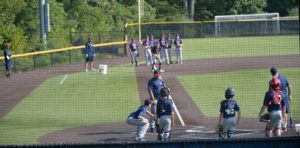 People have questions. Each year, we field over 200 new inquiries from interested players and families. Not all wish to become candidates, but folks want to know who we are and what we do. Of course, the big question is “How does my kid try out for the Ruffnecks?”
People have questions. Each year, we field over 200 new inquiries from interested players and families. Not all wish to become candidates, but folks want to know who we are and what we do. Of course, the big question is “How does my kid try out for the Ruffnecks?”
Over the years, the task of defining ourselves for prospective players and their families is one of consistency. Why? Because we deliver a purposeful, developmental path for serious baseball players. And we ONLY field ONE team per age/class level. The integrity of the single roster (per level) philosophy, along with the opportunities players get to play and practice with older and younger Ruffnecks, are distinctive qualities of the program.
No Traditional Tryouts – What Does That Mean?
We do not hold traditional tryouts. Indeed, we do not hold tryouts at all. “Tryouts” are often followed by pressure to “commit” and plunk money down for a roster spot. That pressure is accompanied by FOMO anxiety that “my son will have nowhere to play if we don’t take this offer.” This is especially prevalent at the 13U level (See “The 13u Year” below). So how does a player become a candidate for Ruffnecks? And how does a player or a family sort through the noise? There are several, specific, ways to become a candidate for a Ruffnecks roster:
- Inquire – Families are encouraged to inquire anytime if they posesss a seriousness of purpose, or if they are new to the area. If we can fit you into one of our workouts, we will do so. We will also be candid if there is not an opportunity. Candidacy always begins with an inquiry and a discussion.
- Enroll in Fall Baseball: Registration opens in June for the upcoming Fall. There are three Fall Programs.
- 13U Fall Program
- HS Wood Bat Program – Ages 14u – 16u with NO Varsity HS Experience
- College Prep Program – Ages 15u – 17u with high level JV or Varsity Experience
- Meet and Interview – We will do our best to schedule an in-person meeting with any prospective candidate at any level.
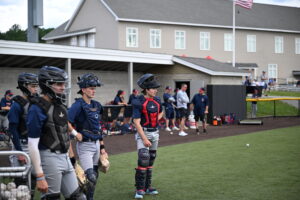 Selecting a program matters… so does selecting a TEAM. Buyers beware! Some red flags and considerations follow:
Selecting a program matters… so does selecting a TEAM. Buyers beware! Some red flags and considerations follow:
- Does the program have one team, or multiple teams at a given level?
- Be sure the program is specific about which roster you are assigned to. If they have multiple teams, anything can happen. And they do NOT need your money “NOW.”
- If you are told you can “play up,” be careful. Get a definition of what that means.
- Daddy Ball: Is a parent coaching?
- Coaching in general: Are there one, two, or more coaches with the team.
- Do the coaches have experience coaching?
- Know how many returners there are on rosters. Ask to speak to some of those families.
- Know how the rosters are constructed.
- Tryouts – How are they run? What do they evaluate? How many? Do returners try out?
- Does the same coach move forward with a team from year to year? Ruffnecks coaches do NOT.
OPEN HOUSE: Sunday, June 22, 2025
Our staff will conduct and OPEN HOUSE workout for rising 13u candidates on Sunday, June 22 at The Roxbury Latin School in West Roxbury, MA. Interested candidates should contact us at neruffnecks@gmail.com or by leaving a message at (781) 400-1959.
The 13U Year – An Important Choice
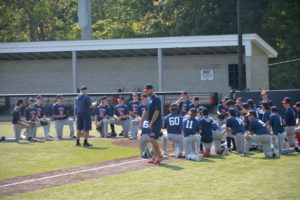 13U players make the transition from the small diamond to the big diamond. It can be an anxious time, with questions, and misinformation. The Ruffnecks selection process believes in the “Golden Rule,” particularly at the 13U level: The Golden Rule is that players and families should take their time, without pressure… just as anyone would want to be treated. And we do the same. We take our time through our 13U Fall Development Program to get to know those new 13U candidates who really want to become part of the next Ruffnecks class. We speak to families and answer their questions.
13U players make the transition from the small diamond to the big diamond. It can be an anxious time, with questions, and misinformation. The Ruffnecks selection process believes in the “Golden Rule,” particularly at the 13U level: The Golden Rule is that players and families should take their time, without pressure… just as anyone would want to be treated. And we do the same. We take our time through our 13U Fall Development Program to get to know those new 13U candidates who really want to become part of the next Ruffnecks class. We speak to families and answer their questions.
The Rufffnecks uses the 13U Fall Baseball Progam that begins the Sunday after Labor Day. It is a six week, instructional program that permits us to do what we do, which is to TEACH. The 13U selection process is not defined by traditional “Tryouts.” We build our rosters slowly and deliberately through the 13U Fall Program. We evaluate and select new players to the program as a Staff, not solely by the coach of a given team. Our entering class of 13U Ruffnecks is chosen with consideration for several qualities: Baseball IQ; Baseball “I will”; Athleticism; and parents who are willing to step aside and let the program do the coaching. We do not build our rosters from cliques of players who follow each other or a coach along the path of empty promises. We interview and speak to every candidate and family. There comes a time to make a decision, but it is fair to permit both sides to be deliberate and thoughtful.
13U Ruffnecks Experience: Entry Point to the Program
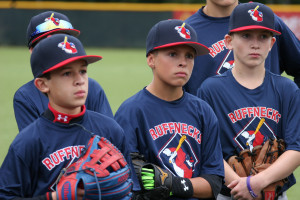 The 13U Ruffnecks is the first year in our program. We do not run 12U or younger teams. We promote “Baseball Begins at 90,” which means the 90 foot diamond. We attract young candidates through referrals, word of mouth, and our reputation for development. We use our 13U Fall Baseball Program to meet, teach, and learn about players. Tryouts in the middle of August just do not match our fall experience. 13U candidates are encouraged to participate in Fall Baseball where we work with 40 to 50 players, teaching what we do. The Fall Program is staffed by the coaches in the Ruffnecks program and other professional associates. We have over 15 coaches working our sessions every Sunday. Those coaches contribute a range of knowledge and experience to the 13U experience and instruction. We find this the most effective way to observe, teach, and evaluate boys who may be a fit for our program. Participation in the Ruffnecks Fall Baseball Program is neither too much nor too little; it is compatible for those who participate in other fall sports. It is a six week (Sundays Only) program that provides opportunities for most boys to make enough of the sessions to benefit from the experience. We clearly communicate our selection process throughout the fall. Patience, confidence, and the desire to be a Ruffneck are important attributes in our selection process. Ability is important, of course, but these are 13 year olds!!! They all grow and develop along different timelines.
The 13U Ruffnecks is the first year in our program. We do not run 12U or younger teams. We promote “Baseball Begins at 90,” which means the 90 foot diamond. We attract young candidates through referrals, word of mouth, and our reputation for development. We use our 13U Fall Baseball Program to meet, teach, and learn about players. Tryouts in the middle of August just do not match our fall experience. 13U candidates are encouraged to participate in Fall Baseball where we work with 40 to 50 players, teaching what we do. The Fall Program is staffed by the coaches in the Ruffnecks program and other professional associates. We have over 15 coaches working our sessions every Sunday. Those coaches contribute a range of knowledge and experience to the 13U experience and instruction. We find this the most effective way to observe, teach, and evaluate boys who may be a fit for our program. Participation in the Ruffnecks Fall Baseball Program is neither too much nor too little; it is compatible for those who participate in other fall sports. It is a six week (Sundays Only) program that provides opportunities for most boys to make enough of the sessions to benefit from the experience. We clearly communicate our selection process throughout the fall. Patience, confidence, and the desire to be a Ruffneck are important attributes in our selection process. Ability is important, of course, but these are 13 year olds!!! They all grow and develop along different timelines.
The Slippery Slope
There are several pitfalls at the transitional stage of 13U baseball:
- The “All-Star” mentality that emerges from the 12 year old year is vulnerable to promises of continued stardom and success, sold by some who aggressively recruit 13 year olds. Boys and families are enticed by the prospect of winning at 13U with a “bunch of good players.” If chasing trophies at 13U is important, the Ruffnecks program may not be a fit.
- The “Herd Mentality” that takes clusters of boys to one team or another usually runs its course in a year or two. Geography plays a role, but we try to draw from a wide range of communities.
- The race to puberty is not a predictor of future success. Size and strength provide an immediate advantage, but they are not predicting factors.
- There is “market clutter.” There are too many choices at the 13U level. Families often simply do not know what they are looking for or where to find it.
Our 14U Ruffnecks is an extension of the 13U program, but with a higher level of competitive challenge. Our 14s participate in challenging tournaments and play against older competition. We experience very little attrition from 13U to 14U. We add to the roster, and roles become more defined. We are usually able to consider 3 to 4 new players at the 14U level. We do not take players we feel we cannot develop. Our 13U roster numbers 14 to 15 players. Our 14U roster is similar (though we go to 15 to 17, depending on the number of 9th graders).
College Development Program: 15U to 18U
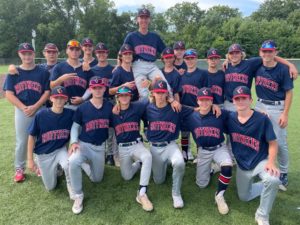 We consider graduation class as well as age, positional roles, and the ability for each player to contribute to a given roster. Generally, the “Senior” College Prospect 17U roster is for rising seniors. The 16U roster is comprised primarily of rising juniors. Accordingly, our 15s are mostly rising sophomores and younger juniors. We have no tryouts, nor do we do private evaluations. It is best for new candidates to participate in our Fall Baseball program (outside) or our Winter Workouts, which are indoor sessions held at Harvard University and Boston College. Winter Workouts are by invitation only, though new candidates may inquire. Our network of professional scouts, high school, and college coaches also provide recommendations for players who may benefit from the Ruffnecks experience. Expectations are clearly laid out upon enrollment.
We consider graduation class as well as age, positional roles, and the ability for each player to contribute to a given roster. Generally, the “Senior” College Prospect 17U roster is for rising seniors. The 16U roster is comprised primarily of rising juniors. Accordingly, our 15s are mostly rising sophomores and younger juniors. We have no tryouts, nor do we do private evaluations. It is best for new candidates to participate in our Fall Baseball program (outside) or our Winter Workouts, which are indoor sessions held at Harvard University and Boston College. Winter Workouts are by invitation only, though new candidates may inquire. Our network of professional scouts, high school, and college coaches also provide recommendations for players who may benefit from the Ruffnecks experience. Expectations are clearly laid out upon enrollment.
Baseball Development One Level at a Time
Our program builds skill development from year to year. We add to rosters from prior seasons with new players joining returning players. Rosters expand to include some players who play as “PO’s” (Pitchers Only). In general, our rosters have 13 to 15 position players for whom we allocate playing time with at-bats. PO’s can bring our roster size to as many as 20 to 22. Some pitchers are two-way players.
What We Do
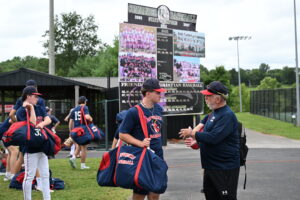 We coach and develop. We instruct. We build teams that are part of a Program. After all, the Program is the TEAM of the teams. We travel with a unique (and challenging) travel model. We play a lot of baseball at all levels. We look for athletic players and supportive families willing to let our coaches do the coaching.
We coach and develop. We instruct. We build teams that are part of a Program. After all, the Program is the TEAM of the teams. We travel with a unique (and challenging) travel model. We play a lot of baseball at all levels. We look for athletic players and supportive families willing to let our coaches do the coaching.
What We Do NOT Do
We do not actively recruit and solicit players; we prefer they find us through referrals and reputation. We do not run a 12U team to feed our development system; we begin on the full-sized diamond. We do not build our 13U (entry-level) roster with the biggest, most mature players so that we can win at 13. And we do not easily “kick players to the curb” who have been developed at 13u & 14u as long as they have put in the effort and can define a role for themselves.
We have our shortcomings, to be sure. We do not succeed with every team and every player. Indeed, there are players who leave the program, though our attrition is quite low. When they leave, it is because we either could not help them further, or because they felt their baseball objectives would be better met elsewhere. We do not take temporary players or extra players to a tournament to bolster our rosters. We do not field “Showcase” teams; Our teams play great competition, wherever that takes us. We do not do Parent-Coached baseball. Parents are not in the dugout or on the field. Period. We have no roles for parents as scorekeepers or statisticians.
The Landscape
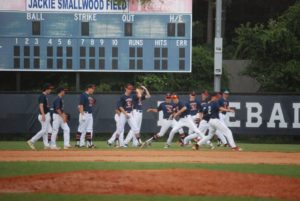 The New England Ruffnecks stand out at a time when there is considerable confusion regarding the options for baseball instruction, participation, and development. “Daddy Ball” teams, facility-based teams, “elite” teams, “scout” teams, and “prospect” teams litter the landscape, often making claims that are not supported by what they deliver. New teams crop up each year, often formed by parents, coached by parents, or led by parents with the ability to rally a group of kids and families. Some programs enjoy short-term success, and some are sustained only as long as those parents or coaches have a child in the program.
The New England Ruffnecks stand out at a time when there is considerable confusion regarding the options for baseball instruction, participation, and development. “Daddy Ball” teams, facility-based teams, “elite” teams, “scout” teams, and “prospect” teams litter the landscape, often making claims that are not supported by what they deliver. New teams crop up each year, often formed by parents, coached by parents, or led by parents with the ability to rally a group of kids and families. Some programs enjoy short-term success, and some are sustained only as long as those parents or coaches have a child in the program.
The Ruffnecks are not the only choice. There are several other fine programs with good coaches and good players. But thoughtful families must navigate the landscape carefully and thoughtfully. The good choices are not simple and certainly not plentiful.
Our Objectives
The Ruffnecks are committed to keeping our objectives simple: At the younger ages we prepare players for high school varsity competition. From 15U and up, we are a college development program. This does not mean that every 13 year old who enters our program will go on to play college, but it does mean that our curriculum is designed for that path. We do not select the biggest, baddest, players at 13, nor do we care. We do however, attract good players who become better, and eventually many of them become very good players.
We absolutely believe in a steady addition of “new blood” and consider new candidates for every roster, every year. However, we are selective. We do not take players who cannot contribute. There are measures of meritocracy. We encourage multi-sport athletes and believe they are among the best baseball players in the long run. As players grow through the system, they develop a self awareness about themselves as student-athletes. This means that they begin to realize what kind of ballplayer they may become at the next level and what colleges and universities are realistic. Indeed, the focus on their development is not entirely as baseball players since no program can wave a magic wand to get a sub-par student recruited to an academic institution. Ruffnecks rosters are assembled with four criteria as principle determining factors:
- Age & Graduation Class (HS). Is the player young for his class or age appropriate?
- Ability (Talent)
- Projected Role
- Positional Needs/Roster Balance
Understanding the Culture
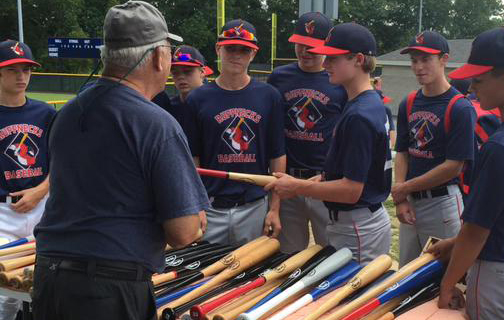 Players and families, once they are past the transition to the big diamond at 13 and 14, come to realize that there are really very few programs focused on development. We have not reinvented the principles that have guided baseball development for years. We try to adhere to those principles. Our rosters provide depth and talent and are built to compete. They are sufficiently large. While we care that all our players play, we are concerned that they discover and carve out a role for themselves. Accordingly, players who are used to being on the field all the time may need to adjust their expectations. The physical and mental demands of the Ruffnecks program are significant. We undertake a rigorous schedule at ALL levels. We attract good, dedicated, professional coaches. We keep parents at arm’s length. For players who prefer to enter showcases, attend college prospect camps, or do other events to give themselves exposure to recruiters, we are NOT the program. Ruffnecks believe that there is still value in playing with a team, as a team, and for a team… in the context of TEAM objectives. Individual skills and talents are best developed and displayed within the framework of team competition – one level at a time.
Players and families, once they are past the transition to the big diamond at 13 and 14, come to realize that there are really very few programs focused on development. We have not reinvented the principles that have guided baseball development for years. We try to adhere to those principles. Our rosters provide depth and talent and are built to compete. They are sufficiently large. While we care that all our players play, we are concerned that they discover and carve out a role for themselves. Accordingly, players who are used to being on the field all the time may need to adjust their expectations. The physical and mental demands of the Ruffnecks program are significant. We undertake a rigorous schedule at ALL levels. We attract good, dedicated, professional coaches. We keep parents at arm’s length. For players who prefer to enter showcases, attend college prospect camps, or do other events to give themselves exposure to recruiters, we are NOT the program. Ruffnecks believe that there is still value in playing with a team, as a team, and for a team… in the context of TEAM objectives. Individual skills and talents are best developed and displayed within the framework of team competition – one level at a time.
